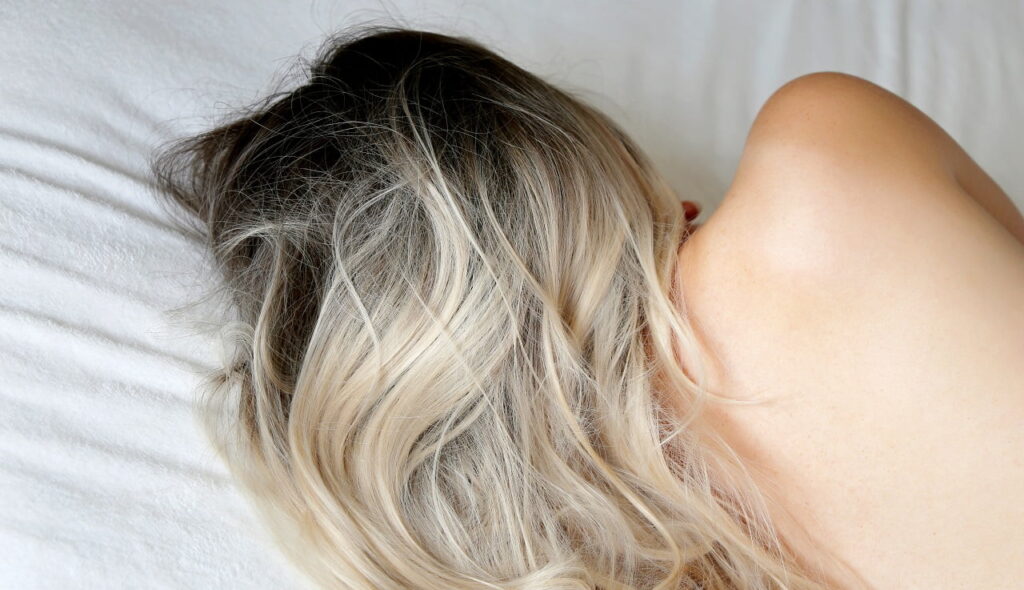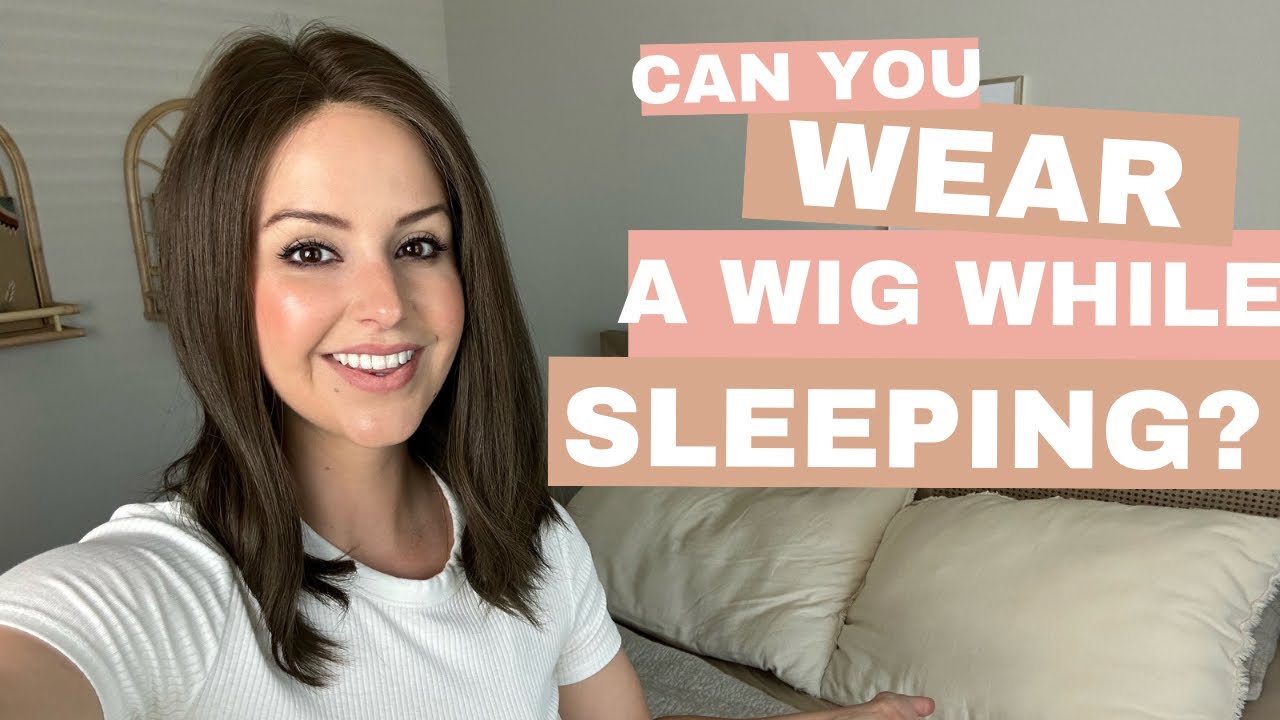So, you’ve just invested in a stunning ginger wig and you’re wondering if you can sleep in it without any mishaps? Well, you’ve come to the right place! In this article, we’ll share some helpful tips for wearing a wig during sleep, so you can rest with peace of mind and wake up with fabulous hair every morning. Whether you want to protect your wig while you toss and turn or simply save time on styling, we’ve got you covered. Let’s get started!

Choosing the right wig
When it comes to choosing the right wig, there are a few factors to consider to ensure your comfort and satisfaction. First, it’s important to select a wig made from a comfortable and breathable material. Many wigs are made from synthetic fibers or human hair, so it’s crucial to choose one that feels good against your scalp and allows your skin to breathe. This will help prevent itching and irritation, especially during sleep.
Another important aspect of choosing the right wig is ensuring the proper size and fit. Wearing a wig that is too tight can be uncomfortable and cause headaches, while a wig that is too loose may not stay in place as you sleep. Take accurate measurements of your head and consult the wig manufacturer’s sizing guide to find the perfect fit. Consider trying on different wig styles to see which one suits you best and allows for a secure and comfortable fit.
Preparing your natural hair
Before you put on your wig, it’s essential to properly prepare your natural hair to ensure a smooth and comfortable fit. One common practice is to braid or tie your natural hair before putting on the wig. This helps keep your hair neat and prevents it from getting tangled or matted under the wig while you sleep. Additionally, braiding or tying your hair can create a flatter surface, making the wig fit more securely.
Applying an oil or leave-in conditioner to your natural hair is another excellent way to prepare it for wearing a wig. This helps to moisturize your hair and prevent dryness and breakage. It also creates a barrier between your natural hair and the wig, minimizing friction and reducing the chances of tangles. Make sure to choose a lightweight product that won’t leave a greasy residue, as this can affect the appearance and style of your wig.
Don’t forget to use a wig cap! Wig caps serve as a protective barrier between your natural hair and the wig. They help keep your hair confined under the wig, preventing it from poking out and disrupting the overall look. Wig caps also help absorb any excess oils from your scalp, keeping your wig fresh and clean for longer periods. Choose a wig cap that matches your skin tone for a seamless, natural look.
Protecting the wig
To ensure the longevity of your wig and maintain its pristine condition, it’s crucial to take the necessary steps to protect it. One simple way to protect your wig is by wrapping it in a silk or satin scarf before going to sleep. These materials help reduce friction, preventing your wig from rubbing against your bedding and potentially causing damage. Additionally, silk and satin are gentle on your wig’s fibers, minimizing the chances of tangling or matting.
Using a wig stand or mannequin head is another effective method to safeguard your wig. When you’re not wearing your wig, place it on a stand or mannequin head to maintain its shape and prevent unnecessary stretching or deformation. Make sure the stand or head is sturdy and adjustable to accommodate the size and style of your wig. This will not only protect the wig but also make it easier to style and put on when you’re ready to wear it.
Avoid exposing your wig to extreme temperatures. Excessive heat can cause irreparable damage to synthetic wigs, while direct sunlight can fade the color of both synthetic and human hair wigs. When not wearing your wig, store it in a cool and dry place away from windows or heat sources. If you must go outside in hot weather, consider wearing a hat or scarf over your wig to provide additional protection from the sun’s rays.
Sleeping position
Choosing the right sleep position is essential to minimize friction and keep your wig in place throughout the night. If possible, try to sleep on your back to minimize rubbing against the pillow and other surfaces. This position helps reduce the chances of tangling or matting your wig as you move during sleep. If sleeping on your back is not comfortable for you, try to sleep on your side or stomach, but be aware that these positions may require extra precautions to keep your wig secure.
Using a silk or satin pillowcase can also be beneficial when wearing a wig during sleep. Unlike cotton pillowcases, which can cause friction and lead to tangles, silk and satin provide a smooth surface for your wig to glide on. This helps preserve the style and minimize the risk of damage. Additionally, silk and satin pillowcases are gentle on your skin and hair, reducing the chances of waking up with bedhead.
While it may be tempting to sleep directly on your wig for convenience, it’s best to avoid this practice whenever possible. Sleeping on the wig can cause tangling, matting, and even deformity of the wig cap. It’s always best to remove the wig before sleep and follow the recommended steps to protect it and maintain its style.

Securing the wig
Ensuring that your wig stays in place while you sleep is crucial to prevent it from shifting or coming off during the night. One effective method is to use a wig grip or adhesive tape. These accessories help secure the wig to your scalp, providing a snug fit that keeps the wig in place as you sleep. Apply the wig grip or adhesive tape according to the manufacturer’s instructions to ensure maximum effectiveness and comfort.
Additional clips or bobby pins can also be useful for extra security. If you find that your wig tends to shift or loosen while you sleep, strategically placing clips or bobby pins in areas where it feels less secure can help keep it in place. Make sure not to place the clips or pins too tightly to avoid discomfort or damage to the wig’s fibers. Experiment with different placements to find the most secure and comfortable option for you.
Tying a silk or satin scarf around the wig can also provide added security and minimize movement during sleep. This method helps keep the wig secure against your scalp and prevents it from shifting or sliding as you move. Simply tie the scarf snugly but not too tightly to ensure a comfortable fit. Additionally, the scarf provides an extra layer of protection for your wig, reducing the chances of friction and tangling.
Avoiding tangling and matting
Tangling and matting can be a common concern when wearing a wig, especially during sleep. To avoid these issues, it’s important to take proper care of your wig before bedtime. Before you go to sleep, make sure to brush or comb the wig to remove any tangles or knots. Start from the ends and work your way up to prevent damage to the wig’s delicate fibers. This step helps minimize the chances of the wig tangling further as you sleep.
If you have a long wig, consider braiding or twisting it before sleeping. This technique helps keep the hair sections separate and minimizes the chances of tangling and matting. Gently braid or twist the wig using small sections and secure the ends with a hair tie or elastic band. This not only protects your wig but also makes it easier to manage and style in the morning.
Another helpful tip is to limit excessive movement during sleep. While it’s impossible to completely control your body’s movements as you sleep, try to be mindful and avoid unnecessary tossing and turning. Excessive movement can cause friction and lead to tangling and matting of the wig. Developing a sleep routine and practicing relaxation techniques can help minimize movement and protect your wig while you sleep.

Maintaining the wig’s style
If you want to wake up with a refreshed and ready-to-go wig style, there are a few steps you can take before and during sleep. Using rollers or flexi rods to set your wig before going to bed can help maintain its style and shape. By wrapping small sections of the wig around the rollers or rods, you can create curls or waves that will last through the night. Remember to use lightweight rollers or rods to avoid discomfort while sleeping.
After setting the wig with rollers or flexi rods, wrap it in a silk or satin scarf. This step not only helps protect the wig but also keeps the style intact. The scarf acts as a barrier against friction and minimizes the chances of tangling or matting. If you prefer a looser style, you can loosely wrap the wig in the scarf, ensuring it’s secure but not too tight.
In the morning, remove the rollers or flexi rods and gently shake out the wig to loosen the curls or waves. Use your fingers or a wide-toothed comb to style the wig as desired. If any areas need a touch-up, use a light mist of water or a wig-friendly styling product to revive the style. Avoid excessive use of heat styling tools, as they can cause damage to synthetic wigs.
Cleaning and washing
Regular cleaning is vital to keep your wig looking fresh and odor-free. It’s essential to follow the manufacturer’s cleaning instructions specific to your wig to avoid damaging it. Some wigs may require handwashing, while others may be machine washable on a gentle cycle. Make sure to use a mild shampoo or wig cleanser and gently wash the wig, focusing on the hair strands and avoiding excessive rubbing or scrubbing.
If you notice any spots or stains on your wig, spot cleaning can be done as needed. Dilute a small amount of wig shampoo or cleanser in water and use a clean cloth or sponge to gently dab the affected area. Avoid soaking the entire wig unnecessarily, as this can affect its shape and style. Rinse the wig thoroughly with cool water to remove any residue, and gently squeeze out the excess water without twisting or wringing the wig.
Allow the wig to air dry naturally to prevent damage from heat or mechanical devices. Place it on a wig stand or mannequin head to retain its shape as it dries. Avoid using a blow dryer or other heated tools, as they can cause the wig fibers to become damaged or even melt. Once fully dry, gently comb or brush the wig to remove any remaining tangles or knots and restore its style.

Dealing with scalp irritation
Some individuals may experience scalp irritation when wearing a wig for an extended period, including during sleep. To minimize discomfort, it’s essential to take breaks from wearing the wig. Allow your scalp to breathe by removing the wig for several hours each day. This will help reduce any accumulated moisture or sweat, which can lead to irritation or itching.
Regularly cleanse and moisturize your scalp to maintain its health and prevent irritation. Use a gentle shampoo or cleanser designed for sensitive scalps to remove any build-up or residue. After washing, apply a moisturizer or leave-in conditioner to soothe and hydrate your scalp. Avoid using products that contain harsh chemicals or fragrances, as they can further irritate your scalp.
Choosing a wig with a breathable cap construction can also help alleviate scalp irritation. Some wig caps are specifically designed with ventilated materials that promote airflow to the scalp, reducing moisture and irritation. If you frequently experience scalp sensitivity, consider investing in a wig with a breathable cap to enhance your comfort during sleep and throughout the day.
Storing the wig
Proper storage is essential to prolong the lifespan of your wig and protect it from damage. Investing in a wig stand or mannequin head is highly recommended. After cleaning and drying your wig, place it on the stand or head to maintain its shape and prevent it from tangling. Make sure the stand or head is sturdy and adjustable to accommodate the size and style of your wig.
Covering the wig with a breathable bag is another important step when storing it. Avoid using plastic bags, as they can trap moisture and lead to mold or mildew. Opt for a bag made from breathable material, such as mesh or cotton, to allow for proper airflow and moisture regulation. This will help keep your wig fresh and prevent any odors or damage caused by excess moisture.
Store your wig in a cool and dry place away from direct sunlight and heat sources. Exposure to extreme temperatures can cause the wig fibers to become brittle or fade in color. Avoid storing your wig near windows or in areas prone to high humidity, as this can also affect its condition. By implementing these storage practices, you can ensure your wig remains in optimal condition and ready to wear whenever you need it.
In conclusion, wearing a wig during sleep can be a comfortable and convenient option for many individuals. By choosing the right wig, preparing your natural hair, protecting the wig, selecting an appropriate sleep position, securing the wig properly, avoiding tangling and matting, and maintaining the wig’s style, you can enjoy a restful night’s sleep while keeping your wig looking fresh and fabulous. Remember to clean and wash your wig regularly, take breaks to avoid scalp irritation, and store the wig correctly to prolong its lifespan. With these tips, you can sleep peacefully knowing your wig is well taken care of and ready to accompany you on your daily adventures.

